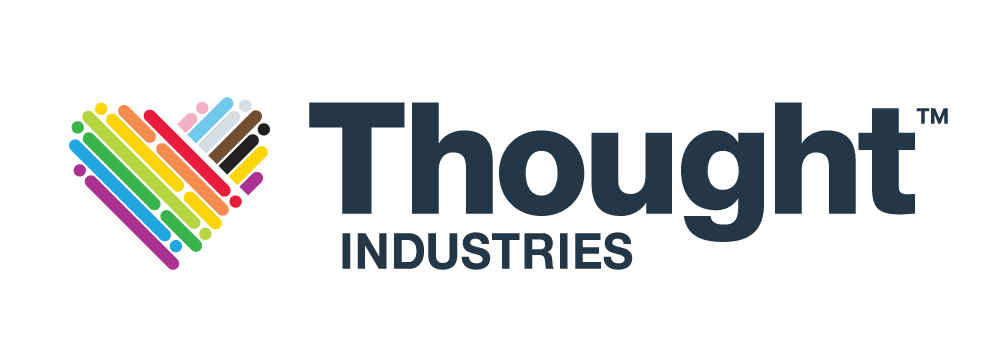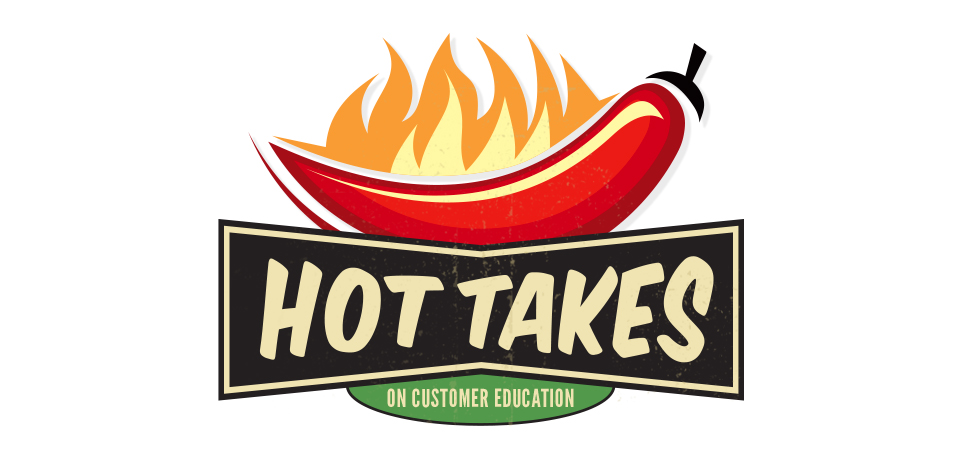I recently sat down with Ryan Dillon for the inaugural episode of his Hot Takes series, where Customer Education professionals eat hot wings, and drop their spicy opinions on all things customer learning! I think I managed to raise some temperatures – and some eyebrows – with my opinions on fee vs free, networking internally, and dumping completion rates. 🌶️
Keep reading to hear some of my most contentious Customer Education opinions!
Hot Take #1: If Your Program Makes Money, You Don’t Need to Beg for Budget
We started off by talking about a huge topic in Customer Education: fee-based training. Monetization is a tricky subject, particularly early on in a program’s development. You might feel driven to give educational content away, or offer it as part of your overall subscription at no added cost, but remember that the decisions you make early on can affect customer sentiment later.
I firmly believe that if your content is adding value – you should set a price for it. We recently discussed this in Episode 91 of the CELab Podcast where – back in the 1980s (over 40 years ago) we shared that organizations were setting prices for education. A paid training program establishes in the customers’ minds the value of your educational program. Setting pricing later in the journey may be helpful to provide time to build a powerful program, but will require expectation-setting with clients. Whatever the case, it’s vital to demonstrate that Education drives product usage and value to a customer’s business.
That’s why my advice is that you don’t need to charge a lot for training content, but think about revenue recognition, set the cadence, and start building revenues – even if it’s slow.
As well as charging for training programs, you can also think about adding revenues through workshops, events, paid webinars, all of which can add to your bottom line.
Hot Take #2: Network Internally: Customer Education Success Takes a Village
Resources are not always split equally across different teams. I’ve been in companies where Product or Customer Success or Operations has extra hands on deck that I can leverage. It’s important to make friends and influence people! Building the soft skills around relationships is really important.
Moving away from the silo of your department can be really powerful. Ryan discussed the idea of thinking about your colleagues in other teams as siblings: you may be different, but you’re all part of the same community and working toward the same goals, so you can certainly help one another. Remember, the value that Customer Education provides is the development and delivery of knowledge on how to use a platform. Those outcomes can benefit many parts of the organization.
Here are some ideas for putting that into practice:
- Build concise and outcome-driven videos or 1-pagers for Marketing and Product teams to use in their efforts
- Guide Enablement teams on how to construct their own impactful training materials.
- Speak to SMEs and document their knowledge, making it accessible to all. (Bonus, now SMEs aren’t continually interrupted from their work to repeat key knowledge.)
- Collaborate with Customer Success about upcoming webinars and events, and offer to share expertise and resources.
Hot Take #3: Your Executive Team Cares Most About the Data
My job is to make sure that people understand not just the basics, but how to get deeper value out of using a specific tool or product. Enablement is taking that even further, I think of it like “weaponized education” – it’s tactical. To make both of these goals happen, we need platforms that can do both – the onboarding and the how-tos, as well as the certifications and accreditations. The software space is changing so fast, we need to be able to offer a lot of functionality.
Integration is a huge part of this. I always ask, “How can I connect my learning platform to the wider business, and show executives how people are using the LMS and how they are getting value?” With the right data you can walk into an important meeting and discuss usage, adoption, engagement and more with ease. In times of economic challenges, this can hep you and your team thrive by proving ROI.
Hot Take #4: Onboarding is Yesterday’s News. Try “Everboarding”
It’s also important to think about how easily you can customize content on the platform, and how flexible it is both for learning designers and Customer Education professionals to tell the right story.
This helps businesses move away from ‘one and done’ training when customers onboard, and towards something more holistic. The impact of always on and always available content – like an LMS provides – is that onboarding becomes “everboarding” – shout out to Kristin Thompson for coining this term! No matter the time or place, your content is available and ideally organized in learning pathways to help new users to learn. While onboarding “events” like webinars make people feel good and are often exciting – ensuring your customers have training available at all times is crucial.
Hot Take #5: Completion Rates Don’t Matter
I know it might sound as spicy as a raw jalapeno, but I believe that completion rates are a product of the “old guard”. Knowing that the customers are engaging and interacting with your content is more important than that they completed a specific task.
These days we’re all competing for attention, and as long as I can deliver content to users, that’s enough to make me happy. After all, completion rates doesn’t mean we provided value, and a lack of completion doesn’t mean we didn’t. Maybe the customer got what they needed after 20% of the content, and went off to put it into practice!
I’m more interested in looking at what learners do after training is complete. Did they use the platform more once they engaged with training? How were their outcomes? What’s the impact on support calls for trained users? To me, these are the truly interesting questions.
Dave Derington is the Director of Customer Education at ServiceRocket, working to build the first ever Customer Education as a Service program. Over the past decade he has built scalable Customer Education programs for two exited start-ups (Gainsight and Azuqua) and the unicorn Sales Engagement firm, Outreach. Part Investigative Journalist, part Teacher, and part Computer Geek, Dave loves to make complex technology easy by learning things the hard way, organizing it, and sharing that knowledge to everyone who needs it in a fun and relatable way.




